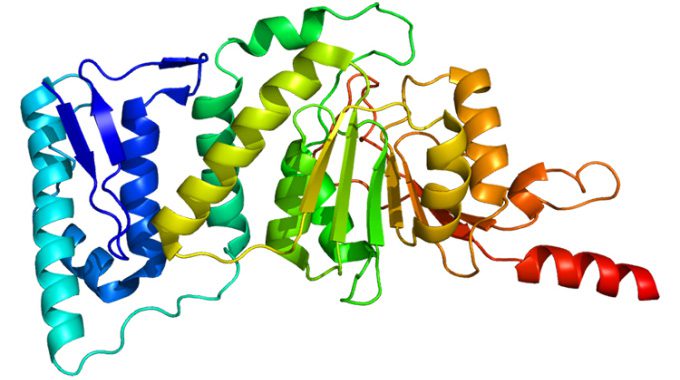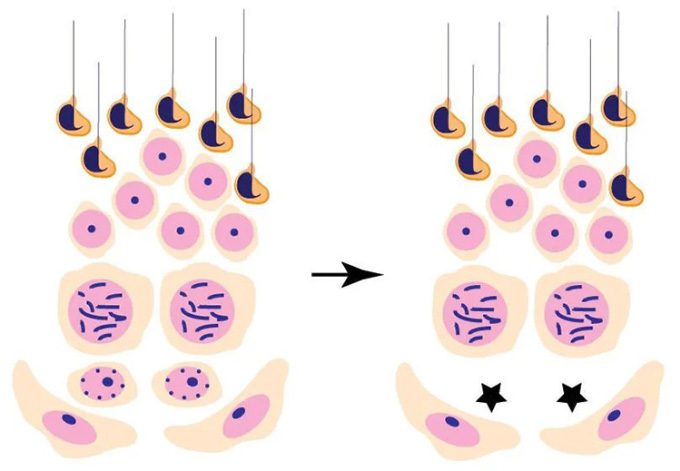A New Study on Mice Reveals That Sperm Production During Maturity Cannot Occur Without the DOT1L Enzyme.
While women are born with a limited number of eggs, men can produce sperm throughout their adult lives. This means they must continuously renew their spermatogonial stem cells, also known as SSCs, which are the starting point for sperm development.
In a recent study published in the journal Genes & Development, Professor Jeremy Wang and his colleagues at the University of Pennsylvania School of Veterinary Medicine in the United States reported that the renewal process of SSCs depends on a stem cell regulator called DOT1L—a type of protein found in eukaryotic organisms, including humans.

Structure of the DOT1L enzyme. (Photo: Wikipedia)
The research team conducted experiments on mice and found that animals lacking DOT1L could not retain spermatogonial stem cells, which affected their ability to continuously produce sperm. This discovery adds to the short list of stem cell renewal factors identified by scientists to date.
“Identifying this essential factor not only helps us understand the biological characteristics of germline stem cells but may one day allow us to reprogram somatic cells, such as a type of skin cell called fibroblasts, to become germline stem cells, essentially creating a gamete in a culture dish. This is the next frontier for infertility treatment,” Wang emphasized.
The researchers stumbled upon the self-renewal function of stem cells through DOT1L when they observed that mice with a DOT1L mutation in all cells did not survive past the embryonic stage. Wang and his colleagues hypothesized that DOT1L might be involved in the meiosis process—the cell division process that produces sperm and eggs, based on the expression patterns of DOT1L. Therefore, they decided to investigate what would happen if they only mutated the gene in germ cells.
“When we did this, the animals survived and appeared healthy. However, upon closer inspection, we found that the mice with the DOT1L mutation in germ cells could only complete an initial round of sperm production, after which the stem cells became depleted and the mice lost all germ cells,” the lead author of the study stated.

When the DOT1L enzyme is inactive, spermatogonial stem cells gradually deplete. (Photo: Jeremy Wang)
This decline in sperm production could arise from other issues, but substantial evidence has demonstrated the link between DOT1L and the failure of the self-renewal process of stem cells. Notably, Wang’s group observed that the mice sequentially lost stages of sperm development, first failing to produce spermatogenic cells, followed by the loss of sperm cavities, and subsequently round and elongated sperm.
In a deeper experiment, the research team discovered that DOT1L seems to regulate a group of genes known as Hoxc, transcription factors that play a crucial role in regulating the expression of a range of other genes.
“We believe that DOT1L promotes the expression of Hoxc genes by methylating them. These transcription factors may contribute to the self-renewal process of stem cells. Understanding this in detail is a future direction for our work,” Wang added.
The ultimate goal of the research team is to use DOT1L and other factors related to the self-renewal process of stem cells to assist those struggling with infertility.


















































